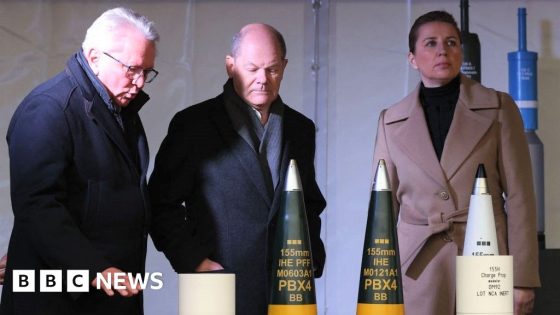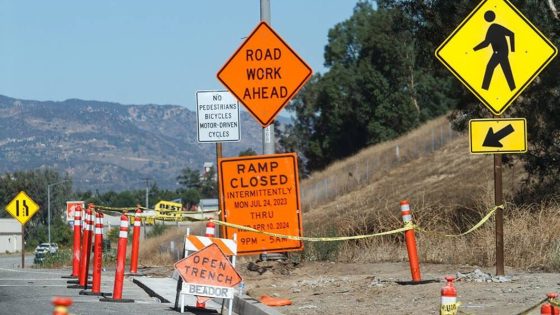AMELIA ISLAND, Fla. — If they reject a proposed settlement offer, officials from the NCAA and power conferences stand to face a catastrophic $20 billion in back damages as well as risking a bankruptcy filing, according to documents obtained by Yahoo Sports.
The two-page document was circulated among power conference presidents and administrators on Tuesday as ACC leaders met at their annual spring meetings in Florida. It details terms of a potential settlement in the House, Hubbard and Carter antitrust cases, a trio of legal challenges brought against the NCAA and its five power conferences seeking back pay for various athlete compensation elements.
The settlement, believed to be in the final stages of adoption, consists of three main concepts: billions in back damages; a new compensation model permitting schools to share as much as $22 million annually with athletes in a capped system; and an overhaul of the NCAA scholarship and roster structure.
The document outlines settlement concepts in detail as well as particulars around the new compensation model. It also provides university leaders with new information on hot-button topics such as how a settlement protects the NCAA from future legal challenges, Title IX’s application and the enforcement of booster-led collectives in a “new infrastructure.”
Documents specify, perhaps for the first time in writing, the total amount in back damages owed to athletes for the use of their name, image and likeness (NIL) before the NCAA lifted NIL prohibitions in 2021.
The amount is $2.776 billion.
The NCAA is responsible for paying the amount over a 10-year period, roughly $277 million annually. About 60% of that will come from a reduction in distribution to its schools. The NCAA is responsible for closing the 40% gap through other means, such as reserves, other net incomes and a significant reduction in operating expenses of as much as $18 million annually.
School distribution will be reduced by about one-fifth over the decade period of the settlement, or about $160 million per year. The NCAA annually distributes more than $700 million to its members, most from ticket sales and television rights agreements of the men’s basketball tournament.
Power leagues are anticipating a reduction of $1-2 million per year in distribution, according to the document.
However, the document notes, the tab will be significantly larger and the timeline significantly shorter with a loss in court. The document outlines settlement “pros” and “cons,” and offers “alternatives” if the settlement is rejected and if the NCAA loses in court – for some, an expected outcome based on previous legal results.
The estimated $20 billion in damages would likely be payable “immediately” after final judgment and “not over 10 years,” the document notes — a reality that would, in all likelihood, result in the NCAA and leagues filing bankruptcy. While bankruptcy may temporarily derail the active antitrust cases, it would move litigation to a bankruptcy judge for a decision, would require restructuring of a new model and would open schools to new direct claims from plaintiff attorneys.
Aside from the financial figures, and one week before a potential adoption of the settlement, the document answers some vexing questions and leaves other unresolved.
In what would be a significant element in the settlement, the court is expected to reaffirm the NCAA’s remaining rules around compensation, “including the prohibition on booster payments if they are not true NIL,” the document notes. While a settlement would not eliminate collectives, it will provide schools with “economic incentives” to bring them inside the university.
The settlement, as well, develops a new “enforcement infrastructure” specifically targeting pay-for-play rules around booster-led NIL collectives — an infrastructure supported by the court’s affirmation of NCAA compensation restrictions. This could potentially resolve a sticking point for administrators who believe that the settlement does not address what they describe as the “Wild West” environment across college sports recruiting in an era of open transfer and unregulated NIL payments.
Also as part of the terms, plaintiffs will agree to cooperate with the NCAA’s years-long congressional lobbying effort “regarding antitrust exemption,” the document notes. NCAA and conference leaders plan to continue lobbying lawmakers in a post-settlement world. They hope Congress will codify the settlement agreement with legislation to offer a more permanent solution or, at the very least, grant the NCAA protection to enforce its rules and deem athletes as students and not employees.
The settlement leaves open the possibility of athletes being deemed employees. The settlement can be “revisited and revised” if athletes become employees by either the courts or by voluntary nature. The agreement permits an adjustment “to an employment model with collective bargaining,” a concept that many feel is necessary for a more long-term solution to the athlete compensation idea.
The document reveals unpublished details around an annual revenue-sharing cap that schools are permitted — not required — to distribute with athletes. The cap is 22% of an average of power conference school media rights, ticket sales and sponsorships.
The cap remains a fluid and unsettled figure, and one that will fluctuate over time as athletic department revenues increase. But a projected revenue cap in Year 1 (presumably, fall 2025) is being shared with multiple college leaders of about $21 million.
However, the document spells out as much as $5 million in exceptions to be “offset” when calculating the cap. Schools will get credit for as much as $2.5 million in annual Alston-related payments and $2.5 million in any new scholarships they add as part of an expansion of financial aid that is part of the new model.
The settlement is expected to provide what the document terms a “release” of antitrust compensation claims from current, former and future athletes for 10 years as part of a “substitution” system for new plaintiffs. In a story on Yahoo Sports earlier this week, such a concept was cited by plaintiff attorney Steve Berman, who said the settlement features a built-in element by which each new class of athletes can opt into the revenue-sharing structure.
The settlement isn’t perfect, as the document notes.
It does not protect the NCAA and conference from future lawsuits brought by state attorneys general, does not preempt state NIL or revenue-sharing laws and offers no real ruling on Title IX’s application in such a compensation model.
Title IX “remains at the campus level to be applied,” the document notes. Jeffrey Kessler, another plaintiff attorney in the case, believes the Title IX issue will eventually be resolved in the courtroom.
“The courts will decide,” he told Yahoo Sports. “It doesn’t impact us. If we have a settlement, we’ll negotiate a system in which athletes will be compensated. The degree in which Title IX applies will be determined [by the courts].”
At the end of it all is a steep price tag — as much as $300 million per school over the 10-year settlement agreement. That figure assumes a school (1) meets a revenue distribution cap of $21 million; (2) $2 million in withheld NCAA distribution for back damages; and (3) as much as $10 million in additional scholarship costs related to an expansion of sport-specific roster sizes.
As part of the new model, officials plan to lift scholarship limitations and implement roster limits, permitting schools to offer scholarships to an entire roster — a concept to prevent future litigation and one explored in detail in a story last week at Yahoo Sports.
For many school administrators, sticker shock exists. The $30 million price tag, a startling figure for an industry that has only provided athletes with mostly non-cash resources, is about 20% of the average athletic department budget of public schools in the ACC, Big Ten, SEC and Big 12.
However, without a settlement, college leaders risk another loss in court.
A trial that results in an NCAA loss will be catastrophic, the document contends. A judge is likely to invalidate restrictions on direct school NIL pay, resulting in “unconstrained” payments from schools to athletes. While the current settlement terms feature a 20% reduction in NCAA school distribution, a loss in court could mean at least 75% of a reduction in NCAA distribution over a decade period.
Much of what is included in the document are already agreed-upon terms that have been disseminated as power conference commissioners work to gain consensus from their league administrators and presidents to authorize the deal. Industry leaders describe the next two weeks as, perhaps, the most consequential in college athletics history, laying out a timeline for potential ratification of a deal as soon as next week.
Source Agencies


